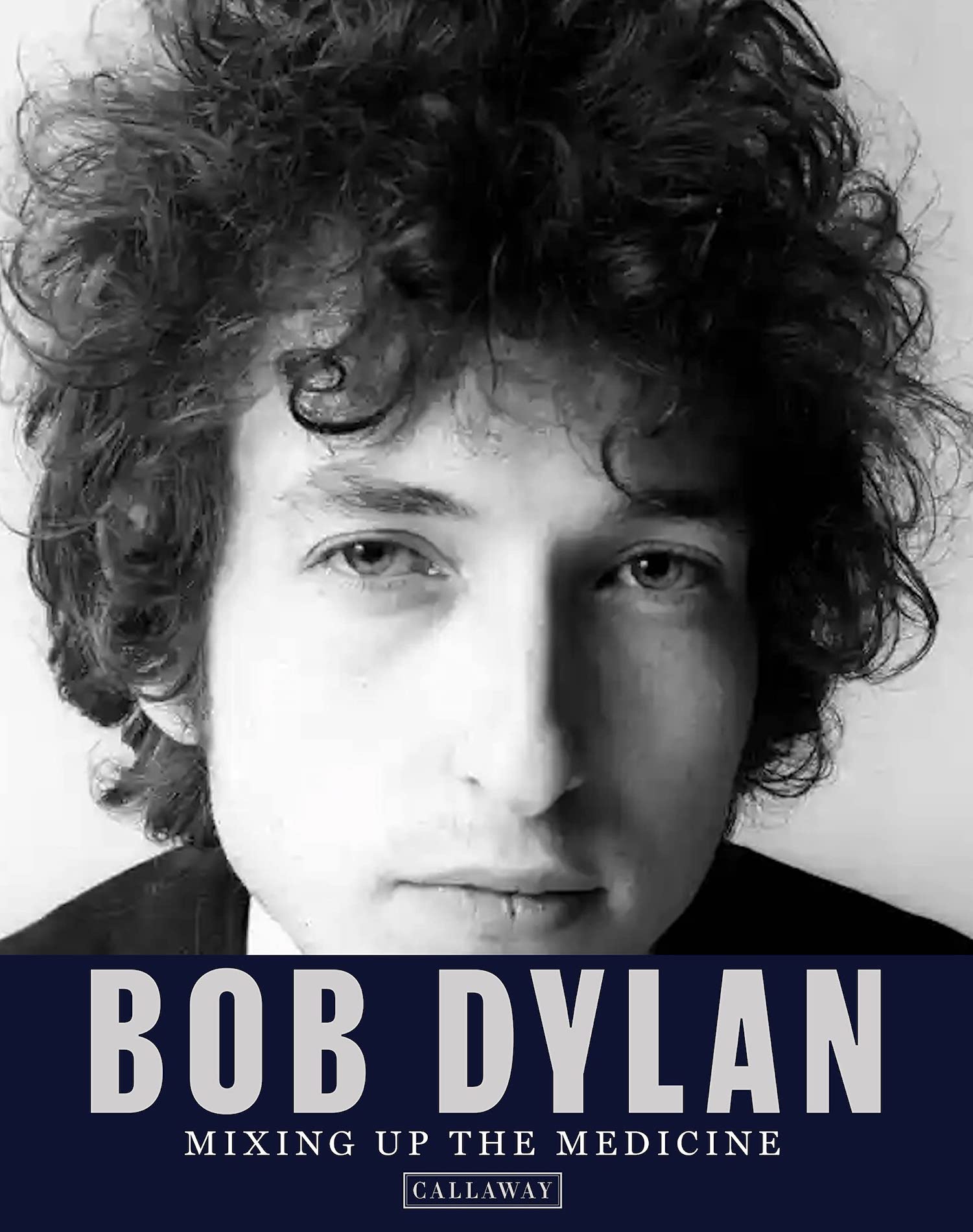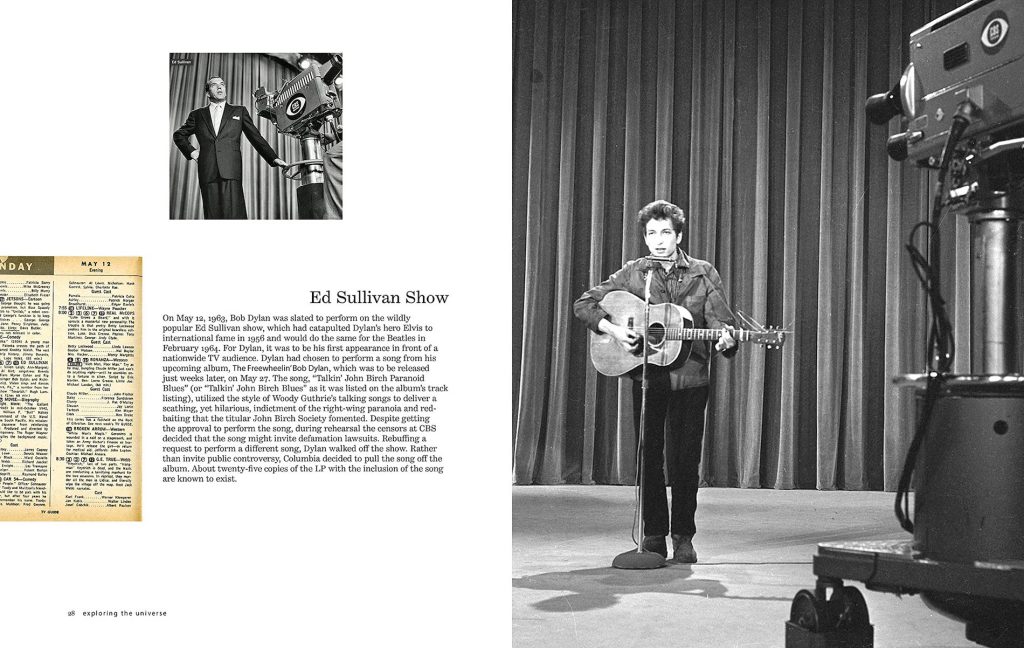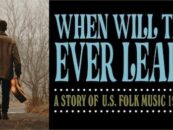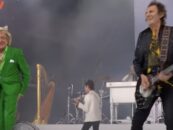‘Bob Dylan: Mixing Up the Medicine’ Showcases a Ton of Previously Unseen Artifacts: Book Review
by Jeff Burger There’s no shortage of books devoted to Bob Dylan and his music. There are album-by-album critiques, songbooks, scholarly works, biographies, a memoir and other writings from the bard himself. There are also Q& collections, including yours truly’s Dylan on Dylan: Interviews and Encounters. Believe it or not, there’s even a book that describes dreams people have had about Dylan. You might think there’d be little left to say or reveal. But you would be wrong.
There’s no shortage of books devoted to Bob Dylan and his music. There are album-by-album critiques, songbooks, scholarly works, biographies, a memoir and other writings from the bard himself. There are also Q& collections, including yours truly’s Dylan on Dylan: Interviews and Encounters. Believe it or not, there’s even a book that describes dreams people have had about Dylan. You might think there’d be little left to say or reveal. But you would be wrong.
The proof of that is in the 2023 Bob Dylan: Mixing Up the Medicine, a 608-page coffee-table book that collects a wealth of previously unseen writings, drawings and handwritten lyrics sourced from the Bob Dylan Center in Tulsa, Okla. The volume also makes room for about 1,100 images from 135 photographers and more than two dozen new essays from Dylan-connected journalists and musicians like Sean Wilentz, Allison Moorer, Jeff Slate and Greil Marcus. It’s authored by Mark Davidson and Parker Fishel, the latter of whom has served as Dylan’s personal/official archivist for the.past 12 years.
Granted, while the essays are insightful, your average non-fan or casual fan is likely to dismiss much of the rest of this book as trivia or minutiae. But if you’ve been closely following Dylan’s career for half a century or more, you’re bound to find engrossing material about his life and music on just about every page.
The bulk of the book is arranged chronologically into eight chapters. It begins with one called “1941-1960: An Accident of Geography,” whose title derives from Dylan’s observation that “it was just an accident of geography. Like if I was born and raised in New York or Kansas City, I’m sure everything would have turned out different.” The volume ends with a chapter titled “2014-2023: The Here and Now,” which covers such recent landmarks as Dylan’s Shadow Kingdom film and his own latest book, The Philosophy of Modern Song.
To give you a sense of just how much interesting material each of these chapters delivers, consider what’s in just the first one. It includes a lengthy essay about a two-sided 78-rpm record that Dylan and two friends paid five dollars to make when he was 15 years old; an interview with Leroy Hoikkala, the drummer in Dylan’s high school band; reflections by Marvin Karlins, a University of Minnesota student in 1959-60 who gave Dylan guitar lessons; and an essay about Dylan’s winter 1960 stay in Madison, Wisc., where he hung out with Danny Kalb (later of the Blues Project) and guitarist David Chase.
Also in the chapter are photos of Dylan’s childhood home; his parents vacationing at Niagara Falls; his hometown’s main street in 1951; his fifth-grade music class, his high school Latin club, and his bowling team; his first band, the Golden Chords, in performance; his idols, Woody Guthrie and Buddy Holly; and his childhood friends. All this and a whole lot more—and we’re still only up to page 57.
Highlights of the remaining chapters are way too numerous to list but they include accounts of Dylan’s encounters with the Beatles; reflections on many of his albums and songs, an essay on Jimi Hendrix’s appreciation of his music; and a long and incisive epilogue by journalist and historian Douglas Brinkley. Among the hundreds of illustrations are the cover of a promotional copy of The Freewheelin’ Bob Dylan with an early alternate track listing that has been hand-corrected by Dylan; the program from his first New York concert (“All seats $2.00”); and a handwritten draft of “Chimes of Freedom,” written on stationery from Toronto’s Waldorf-Astoria.
Also featured are drafts of lyrics for “Maggie’s Farm,” “I Threw It All Away,” “Isis,” “When I Paint My Masterpiece,” “Tangled Up in Blue” and many other songs; a handwritten 1964 missive from Johnny Cash, who noted that Mother Maybelle Carter “digs you deeply”; and letters from such luminaries as George Harrison, Paul McCartney, Solomon Burke, Huey Newton, Jimmy Carter, Bill Clinton, Bruce Springsteen, John Lee Hooker, Archibald MacLeish and Gregory Peck (who praised the song “Brownsville Girl,” which mentions him).
Every notable moment from Dylan’s career is represented by text and photos: his early UK dates with the Band; the Basement Tapes; the motorcycle accident; the Newport Folk Festival appearances; the films; the Theme Time Radio Hour; Tarantula and Dylan’s other books; his Nobel Prize; Broadway’s Girl from the North Country; the Rolling Thunder Revue; the Concert for Bangladesh; the performances with the Traveling Wilburys, the Grateful Dead and Tom Petty—you name it.
Related: Our Album Rewind of the Traveling Wilburys’ debut
At the end of his epilogue to the book, Douglas Brinkley quotes President Barack Obama, who said when presenting the singer with the Presidential Medal of Freedom, “There is not a bigger giant in the history of American music than Bob Dylan.” True, and there is not a more fascinating book about the man than this one. It’s the place to go for fresh insights into how Dylan—like “Johnny” in the basement in “Subterranean Homesick Blues”—has been “mixing up the medicine” for all these years.
The book is available in the U.S. here and in the U.K. here. Dylan, born May 24, 1941, is in the midst of his 2021-2024 “Rough and Rowdy Ways” tour. Tickets are available here and here.








No Comments so far
Jump into a conversationNo Comments Yet!
You can be the one to start a conversation.